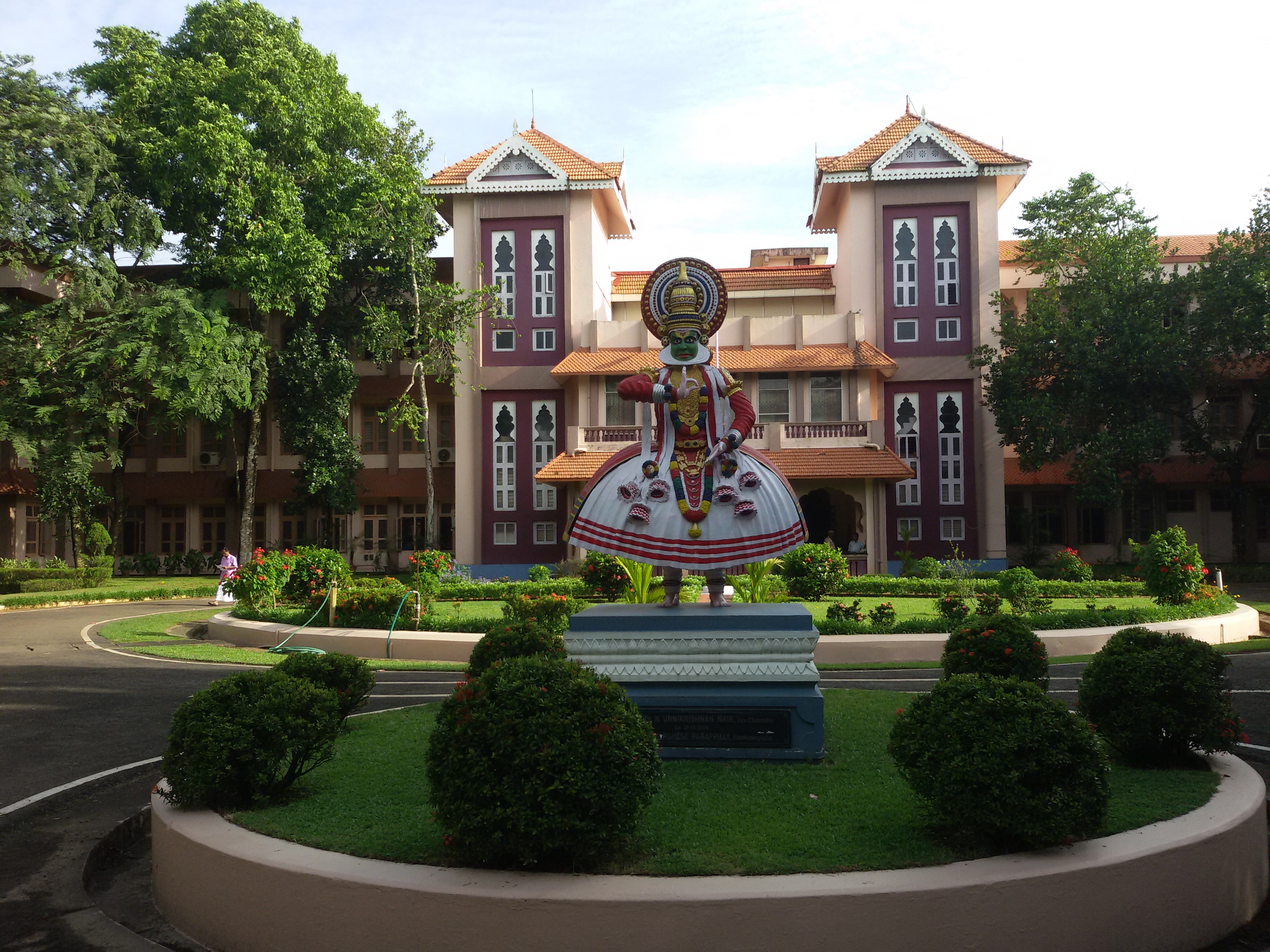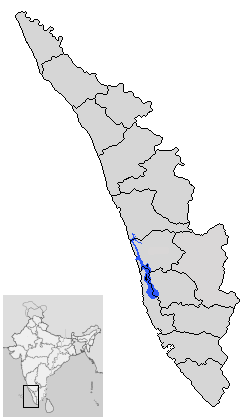|
Victoriopisa Cusatensis
''Victoriopisa cusatensis'' is a amphipod species in the family Eriopisidae. The species name ‘cusatensis’ refers to the Cochin University of Science and Technology (CUSAT). This species has been described by the team of researchers ( Philomina Joseph, Sivasankaran Bijoy Nandan Sivasankaran Bijoy Nandan is a professor at the Department of Marine Biology, Microbiology & Biochemistry, School of Marine Sciences, Cochin University of Science & Technology (CUSAT). He currently holds the office of the Dean, Faculty of Mari ... and Jayachandran P. R.) in 2018 from the Valanthakad mangrove area of Vembanad backwater (Ramsar site). Distribution This is the 14th of this genus to be discovered and lives in complex mangrove habitats in the area. The Kochi backwaters are already home to another similar species, ''Victoriopisa chilkensis'' , which is the dominant amphipod of this genus in these waters. These crustaceans are found in a wide range of habitats ranging from bracki ... [...More Info...] [...Related Items...] OR: [Wikipedia] [Google] [Baidu] |
Animalia
Animals are multicellular, eukaryotic organisms in the biological kingdom Animalia. With few exceptions, animals consume organic material, breathe oxygen, are able to move, can reproduce sexually, and go through an ontogenetic stage in which their body consists of a hollow sphere of cells, the blastula, during embryonic development. Over 1.5 million living animal species have been described—of which around 1 million are insects—but it has been estimated there are over 7 million animal species in total. Animals range in length from to . They have complex interactions with each other and their environments, forming intricate food webs. The scientific study of animals is known as zoology. Most living animal species are in Bilateria, a clade whose members have a bilaterally symmetric body plan. The Bilateria include the protostomes, containing animals such as nematodes, arthropods, flatworms, annelids and molluscs, and the deuterostomes, containing the echinode ... [...More Info...] [...Related Items...] OR: [Wikipedia] [Google] [Baidu] |
Arthropoda
Arthropods (, (gen. ποδός)) are invertebrate animals with an exoskeleton, a Segmentation (biology), segmented body, and paired jointed appendages. Arthropods form the phylum Arthropoda. They are distinguished by their jointed limbs and Arthropod cuticle, cuticle made of chitin, often Mineralization (biology), mineralised with calcium carbonate. The arthropod body plan consists of segments, each with a pair of appendages. Arthropods are bilaterally symmetrical and their body possesses an exoskeleton, external skeleton. In order to keep growing, they must go through stages of moulting, a process by which they shed their exoskeleton to reveal a new one. Some species have wings. They are an extremely diverse group, with up to 10 million species. The haemocoel, an arthropod's internal cavity, through which its haemolymph – analogue of blood – circulates, accommodates its interior Organ (anatomy), organs; it has an open circulatory system. Like their exteriors, the internal or ... [...More Info...] [...Related Items...] OR: [Wikipedia] [Google] [Baidu] |
Crustacea
Crustaceans (Crustacea, ) form a large, diverse arthropod taxon which includes such animals as decapods, seed shrimp, branchiopods, fish lice, krill, remipedes, isopods, barnacles, copepods, amphipods and mantis shrimp. The crustacean group can be treated as a subphylum under the clade Mandibulata. It is now well accepted that the hexapods emerged deep in the Crustacean group, with the completed group referred to as Pancrustacea. Some crustaceans (Remipedia, Cephalocarida, Branchiopoda) are more closely related to insects and the other hexapods than they are to certain other crustaceans. The 67,000 described species range in size from '' Stygotantulus stocki'' at , to the Japanese spider crab with a leg span of up to and a mass of . Like other arthropods, crustaceans have an exoskeleton, which they moult to grow. They are distinguished from other groups of arthropods, such as insects, myriapods and chelicerates, by the possession of biramous (two-parted) limbs, and by ... [...More Info...] [...Related Items...] OR: [Wikipedia] [Google] [Baidu] |
Malacostraca
Malacostraca (from New Latin; ) is the largest of the six classes of crustaceans, containing about 40,000 living species, divided among 16 orders. Its members, the malacostracans, display a great diversity of body forms and include crabs, lobsters, crayfish, shrimp, krill, prawns, woodlice, amphipods, mantis shrimp, tongue-eating lice and many other less familiar animals. They are abundant in all marine environments and have colonised freshwater and terrestrial habitats. They are segmented animals, united by a common body plan comprising 20 body segments (rarely 21), and divided into a head, thorax, and abdomen. Etymology The name Malacostraca was coined by a French zoologist Pierre André Latreille in 1802. He was curator of the arthropod collection at the National Museum of Natural History in Paris. The name comes from the Greek roots (', meaning "soft") and (', meaning "shell"). The name is misleading, since the shell is soft only immediately after moulting, and is u ... [...More Info...] [...Related Items...] OR: [Wikipedia] [Google] [Baidu] |
Amphipoda
Amphipoda is an order of malacostracan crustaceans with no carapace and generally with laterally compressed bodies. Amphipods range in size from and are mostly detritivores or scavengers. There are more than 9,900 amphipod species so far described. They are mostly marine animals, but are found in almost all aquatic environments. Some 1,900 species live in fresh water, and the order also includes the terrestrial sandhoppers such as ''Talitrus saltator''. Etymology and names The name ''Amphipoda'' comes, via New Latin ', from the Greek roots 'on both/all sides' and 'foot'. This contrasts with the related Isopoda, which have a single kind of thoracic leg. Particularly among anglers, amphipods are known as ''freshwater shrimp'', ''scuds'', or ''sideswimmers''. Description Anatomy The body of an amphipod is divided into 13 segments, which can be grouped into a head, a thorax and an abdomen. The head is fused to the thorax, and bears two pairs of antennae and one pair of s ... [...More Info...] [...Related Items...] OR: [Wikipedia] [Google] [Baidu] |
Cochin University Of Science And Technology
Cochin University of Science and Technology (CUSAT) is a state government-owned autonomous university in Kochi, Kerala, India. It was founded in 1971 and has three campuses: two in Kochi (Kalamassery and Ernakulam) and one in Kuttanad, Alappuzha, inland. The university awards degrees in engineering and science at the undergraduate, postgraduate and doctoral levels. The university was founded in 1971 as the University of Cochin through an act of the Kerala Legislature, which was the result of a campaign for postgraduate education in the state. It was renamed as Cochin University of Science and Technology (CUSAT) in February 1986. Its goals are to promote undergraduate and postgraduate studies and advanced research in applied science, technology, industry, commerce, management and social sciences. Admissions to both undergraduate and postgraduate courses are based on the Common Admission Test (CAT). Departmental Admission Tests (DAT) are conducted for some postgraduate cours ... [...More Info...] [...Related Items...] OR: [Wikipedia] [Google] [Baidu] |
Philomina Joseph
Philomina (1926 – 2 January 2006) was an Indian actress, who worked in the Malayalam film industry. She acted in more than 750 films in her career. She played mostly character and comedy roles, besides that of mother and grandmother. She started acting on the stage. This experience stood her in good stead when she was offered her first film role. The character of Anappara Achamma in the 1991 film '' Godfather'', portrayed by her is acknowledged to be one of the most powerful roles ever in Malayalam cinema. Early life Philomina entered the film industry with eight years of experience in professional drama, she worked with the drama troupe of P. J. Antony. She used to say it was her initial experience with an actor like Antony that helped shape her film career. Her parents were perturbed when she had to travel to Chennai for the first shoot. It was Moidu Padiyathu who convinced her parents. Her first movie, ''Kuttikkuppayam'' (1964), produced by T. E. Vasudevan and directed by ... [...More Info...] [...Related Items...] OR: [Wikipedia] [Google] [Baidu] |
Sivasankaran Bijoy Nandan
Sivasankaran Bijoy Nandan is a professor at the Department of Marine Biology, Microbiology & Biochemistry, School of Marine Sciences, Cochin University of Science & Technology (CUSAT). He currently holds the office of the Dean, Faculty of Marine Sciences, Cochin University of Science and Technology. He was served as Head of the department, Department of Marine Biology, Microbiology and Biochemistry, CUSAT during 2019-2021 period. He has expertise in teaching, research, and development activities in the broad area of Aquatic Ecosystem Characterisation, Conservation, Restoration and Management, Carbon Dynamics & Community Ecology, Communities Ecology & Biology, Eco-toxicology and Biology of Polar Communities. Recently a new species of deep sea wood boring mollusc collected from eastern Arabian Sea named after Prof. Bijoy Nandan as ''Xylophaga nandani'' by team of Researchers from Brazil and India namely, Marcel Velásquez, P.R. Jayachandran & M. Jima. The R&D achievements emanate ... [...More Info...] [...Related Items...] OR: [Wikipedia] [Google] [Baidu] |
Jayachandran P
Jayachandran is a surname. Notable people with the surname include: * M. Jayachandran (born 1971), Indian film score composer, singer, and musician * P. Jayachandran Paliyath Jayachandrakuttan is an Indian playback singer and actor from Kerala. Jayachandran is best known for his captivating voice which gave him the title ''Bhava Gayakan'' by the music fraternity of South India. He has worked with many comp ... (born 1944), Indian playback singer and classical musician {{surname Surnames of Indian origin Indian masculine given names Masculine given names ... [...More Info...] [...Related Items...] OR: [Wikipedia] [Google] [Baidu] |
Vembanad Backwater
Vembanad is the longest lake in India, as well as the largest lake in the state of Kerala. The lake has an area of 230 square kilometers and a maximum length of 96.5 km. Spanning several districts in the state of Kerala, it is known as Vembanadu Lake in Kottayam, Vaikom, Changanassery, Punnamada Lake in Alappuzha, Punnappra, Kuttanadu and Kochi Lake in Kochi. Several groups of small islands including Vypin, Mulavukad, Maradu, Udayamperoor, Vallarpadam, Willingdon Island are located in the Kochi Lake portion. Kochi Port is built around the Willingdon Island and the Vallarpadam island. Kuttanad, also known as ''The Rice Bowl of Kerala'', has the lowest altitude in India, and is also one of the few places in world where cultivation takes place below sea level. Kuttanad lies on the southern portion of Vembanad. The Nehru Trophy Boat Race is conducted in a portion of the lake. High levels of pollution have been noticed at certain hotspots of the Vembanad backwaters. The Gove ... [...More Info...] [...Related Items...] OR: [Wikipedia] [Google] [Baidu] |





